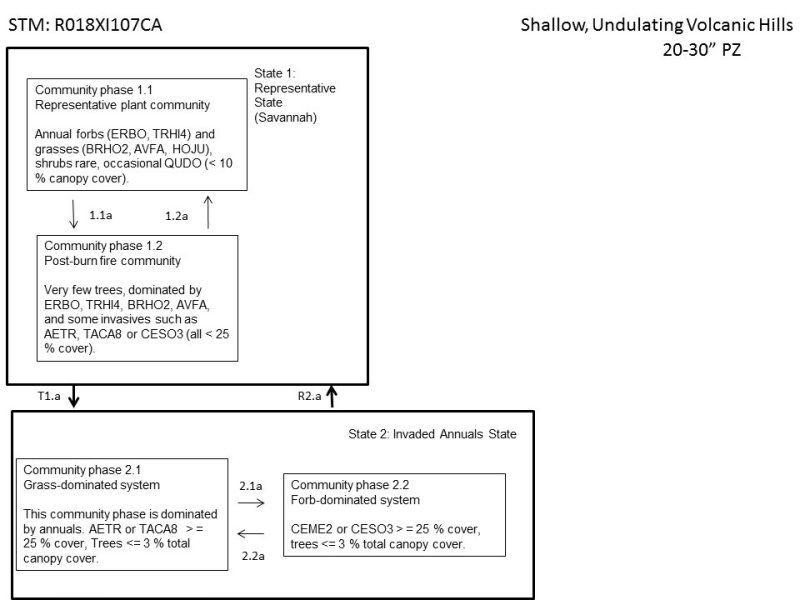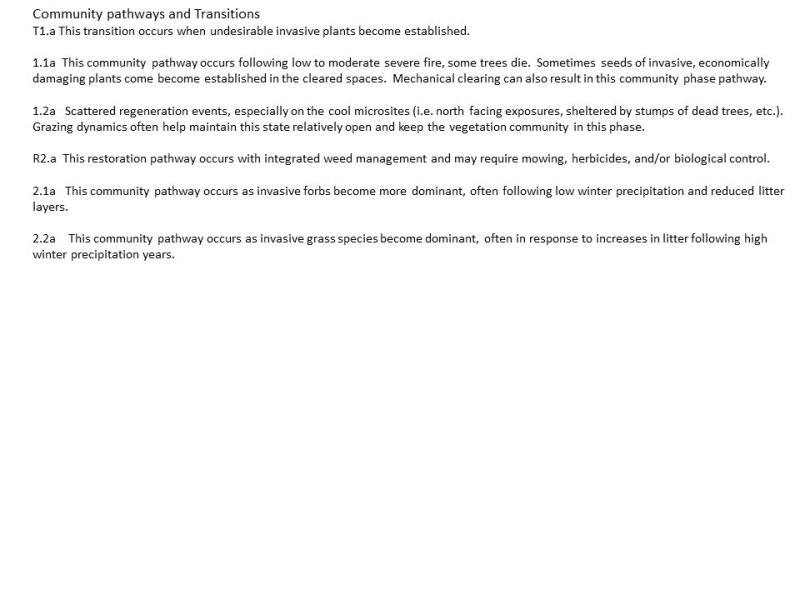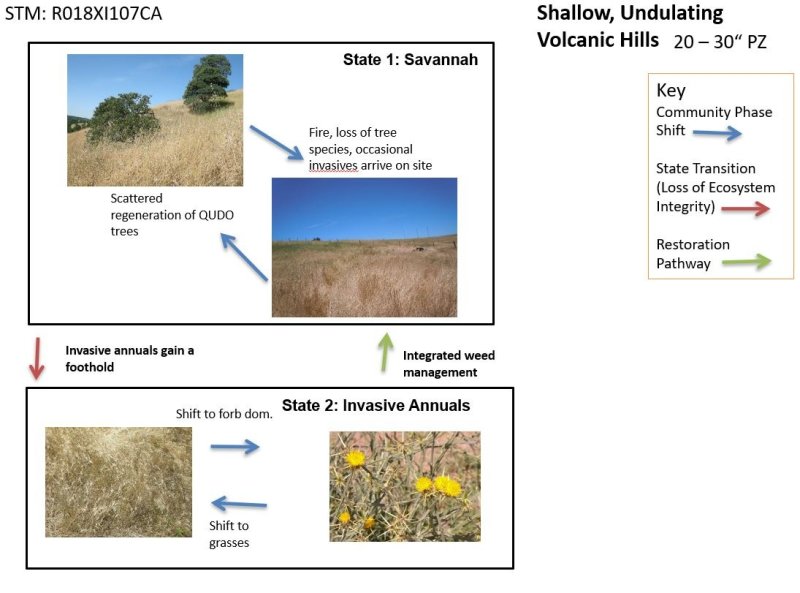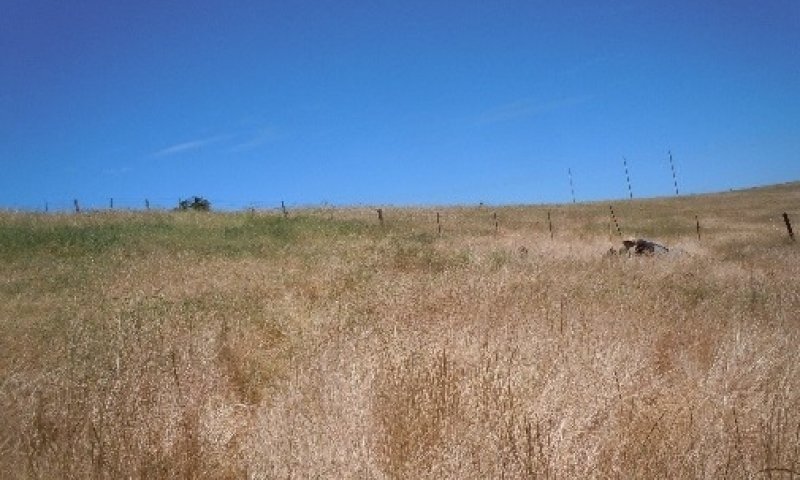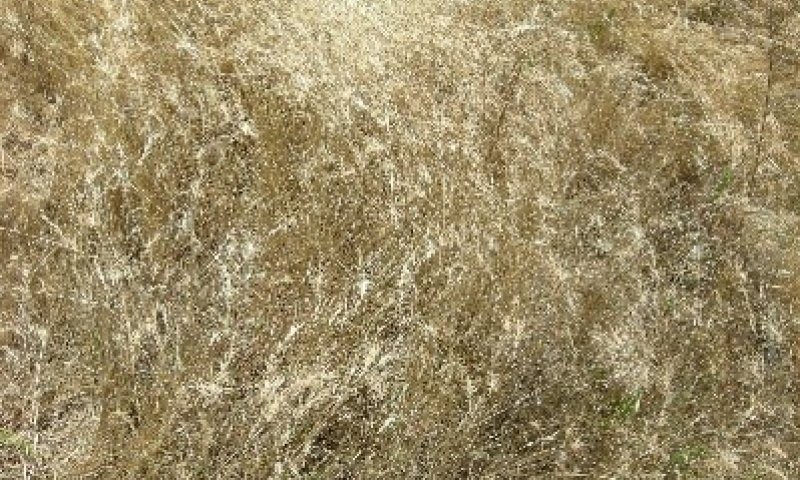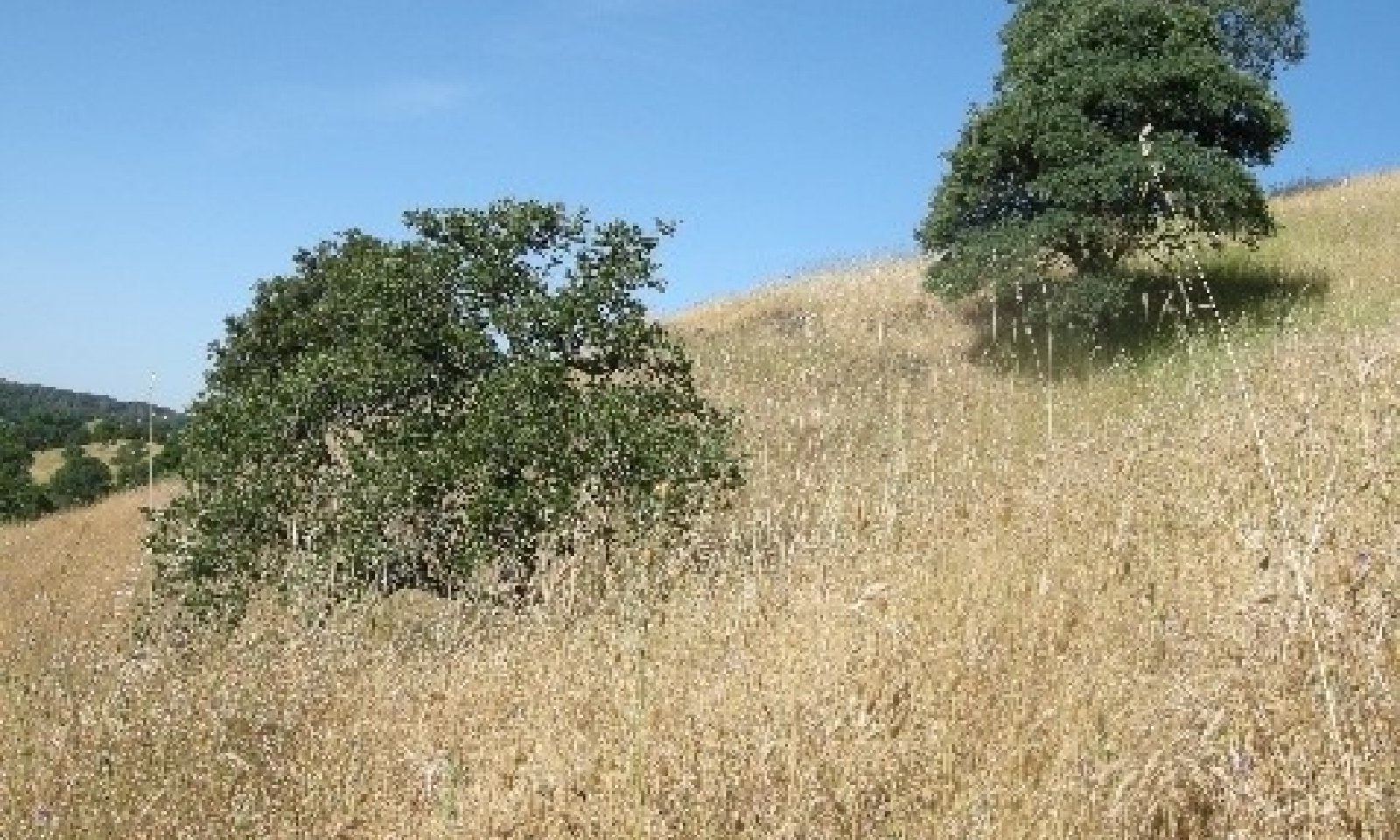

Natural Resources
Conservation Service
Ecological site R018XI107CA
Shallow, Undulating Volcanic Hills
Last updated: 4/24/2024
Accessed: 12/22/2024
General information
Provisional. A provisional ecological site description has undergone quality control and quality assurance review. It contains a working state and transition model and enough information to identify the ecological site.
MLRA notes
Major Land Resource Area (MLRA): 018X–Sierra Nevada Foothills
Major Land Resource Area (MLRA) 18, Sierra Nevada Foothills is located entirely in California and runs north to south adjacent to and down-slope of the west side of the Sierra Nevada Mountains (MLRA 22A). MLRA 18 includes rolling to steep dissected hills and low mountains, with several very steep river valleys. Climate is distinctively Mediterranean (xeric soil moisture regime) with hot, dry summers, and relatively cool, wet winters. Most of the precipitation comes as rain; average annual precipitation ranges from 15 to 55 inches in most of the area (precipitation generally increases with elevation and from south to north). Soil temperature regime is thermic; mean annual air temperature generally ranges between 52 and 64 degrees F. Geology is rather complex in this region; there were several volcanic flow and ashfall events, as well as tectonic uplift, during the past 25 million years that contributed to the current landscape.
LRU notes
This LRU (designated XI) is located on moderate to steep hills in the Sierra Nevada Foothills east of Sacramento, Stockton, and Modesto, CA. Various geologies occur in this region: metavolcanics, granodiorite, slate, marble, argillite, schist and quartzite, as well as ultramafic bands to a limited and localized extent. It includes mesa formations from volcanic flows, where vernal pool habitats occur. Soil temperature regime is thermic and soil moisture regime is xeric. Elevation ranges between 300 and 3400 feet above sea level. Precipitation ranges from 14 to 42 inches annually. Most precipitation falls between the months of November and March in the form of rain. Dominant vegetation includes annual grasslands, blue oak (Quercus douglasii), interior live oak (Quercus wislizeni), chamise (Adenostoma fasciculatum), buckbrush (Ceanothus cuneatus), and foothill pine (Pinus sabiniana).
Classification relationships
CLASSIFICATION RELATIONSHIPS
This site is located within M261F, the Sierra Nevada Foothills Section, (McNab et al., 2007) of the National Hierarchical Framework of Ecological Units (Cleland et al., 1997), M261Fb, the Lower Foothills Metamorphic Belt Subsection.
Level III and Level IV ecoregions systems (Omernik, 1987, and EPA, 2011) are: Level III, Central California Foothills and Coastal Mountains and Level IV, Ecoregion 6b, Northern Sierran Foothills, Ecoregion 6c, Comanche Terraces.
Ecological site concept
This site is characterized by shallow soils derived from volcanic parent materials. It occurs on undulating to hilly volcanic tabular ridges and sideslopes. Slope gradient typically ranges from 3 to 30 %, but may be as high as 60%. Mean annual precipitation typically ranges from 29 to 35 inches, and elevations range from 300 to 1800 feet.
Shallow soils with very low available water capacities restrict the establishment of trees and other woody vegetation. Common soil components include Amador, Pentz. and Inks. Amador soils are loamy, mixed, superactive, thermic, shallow Typic Dystroxerepts. Pentz soils are loamy, mixed, superactive, thermic, shallow Ultic Haploxerolls. Both of these soils are derived from tuffaceous sediments, Amador being derived from acidic tuff and Pentz from basic tuff. Inks soils are loamy-skeletal, mixed, superactive, thermic, shallow Ultic Argixerolls formed from consolidated or cemented sediments from volcanic rocks.
This vegetation community consists of annual grasses and forbs with very few trees or shrubs. Dominant plants include soft brome (Bromus hordeaceus), wild oat (Avena fatua), and Italian ryegrass (Lolium perenne spp. multiflorum) as well as potential infestations areas of the invasive medusahead (Taeniatherum caput-medusae) grass. Annual production data is lacking for this site, but seems to be heavily skewed towards greatest production of herbaceous annual plants (especially annual grasses).
Associated sites
| F018XI207CA |
Deep Volcanic Plateaus and Hills This site commonly occurs nearby. |
|---|
Similar sites
| R018XI125CA |
Very Steep Skeletal Hillslopes Site relationships being developed. |
|---|---|
| R018XI163CA |
Thermic Low Rolling Hills Site relationships being developed. |
Table 1. Dominant plant species
| Tree |
Not specified |
|---|---|
| Shrub |
Not specified |
| Herbaceous |
(1) Bromus hordeaceus |
Click on box and path labels to scroll to the respective text.
